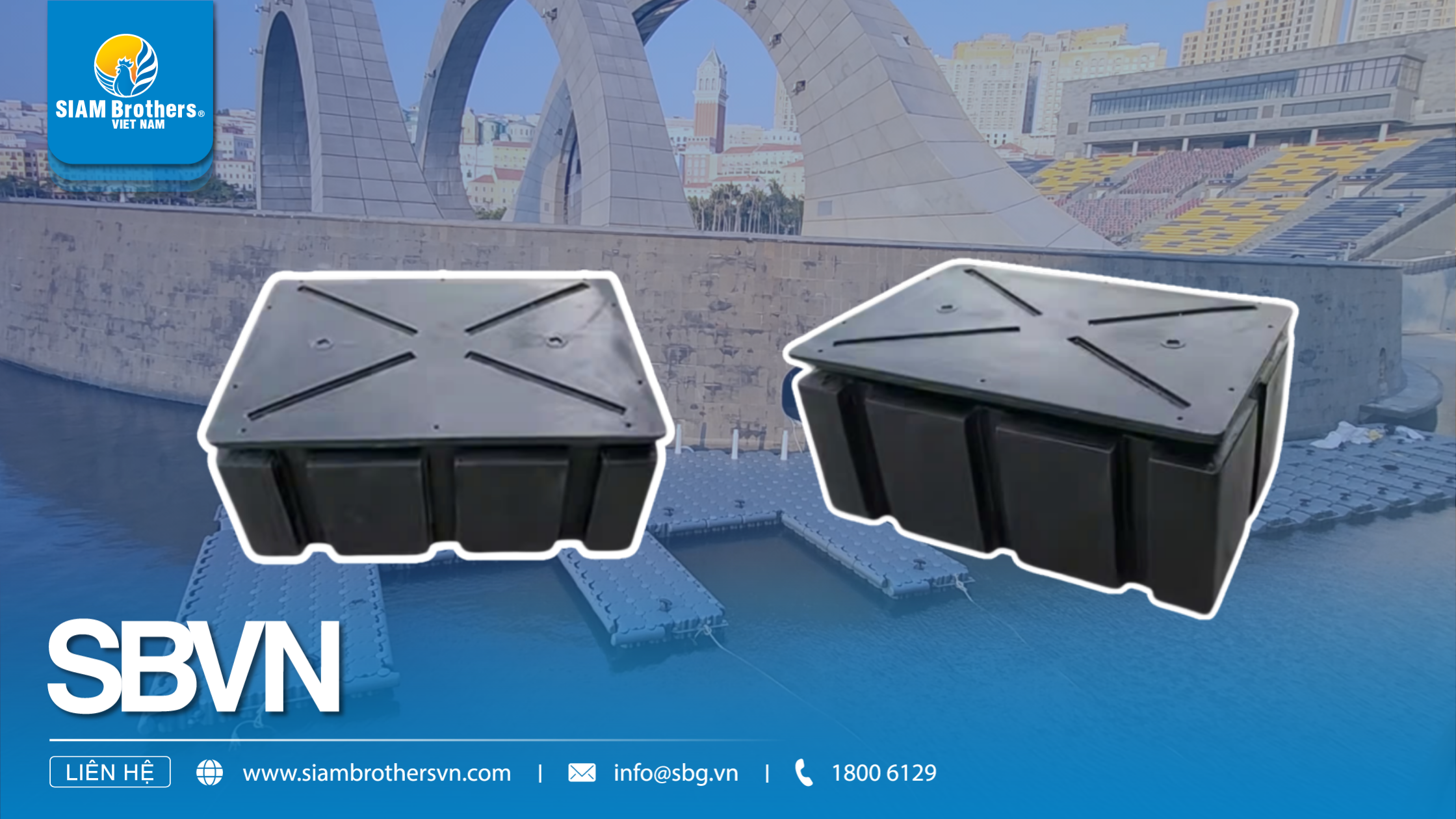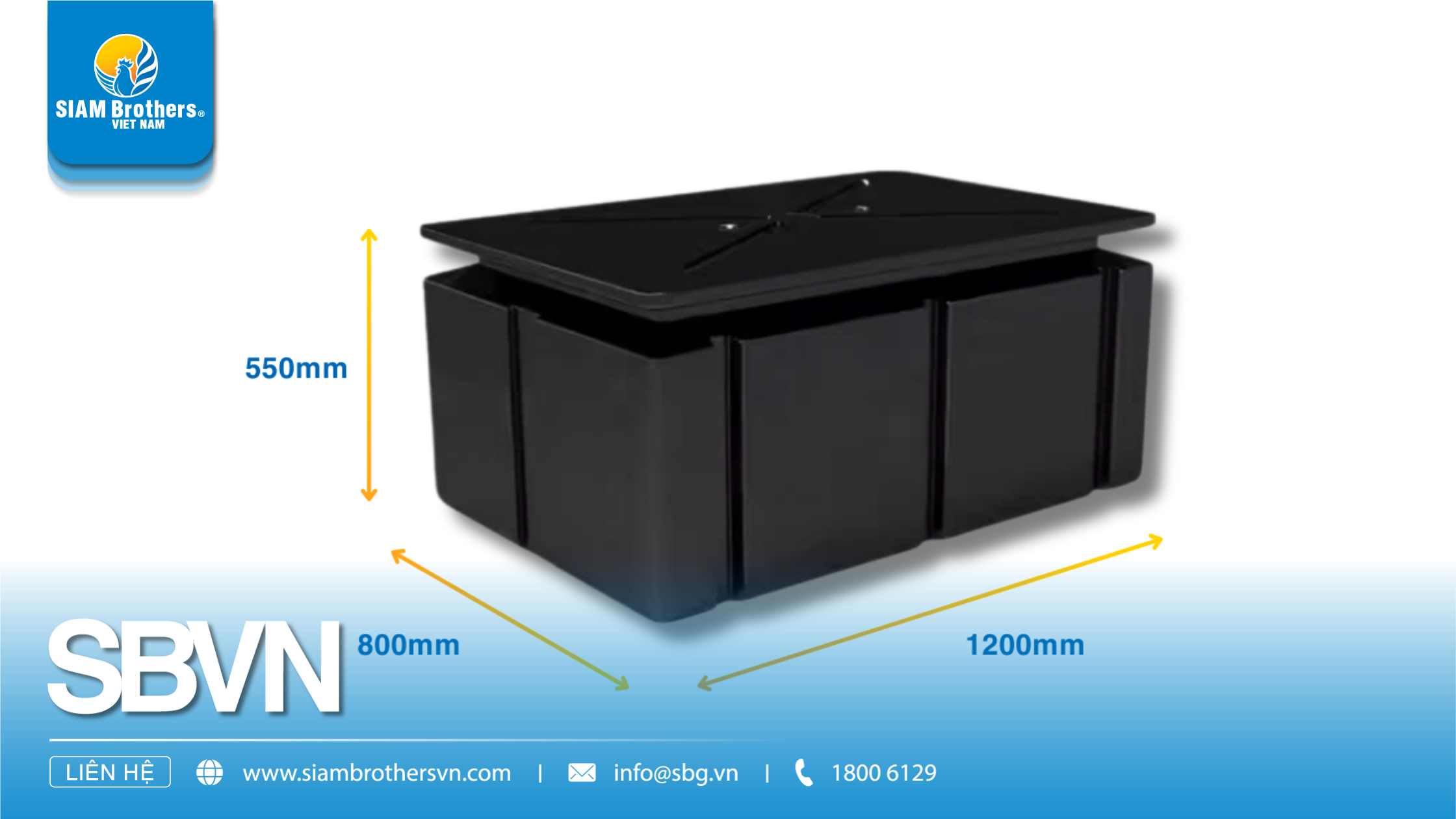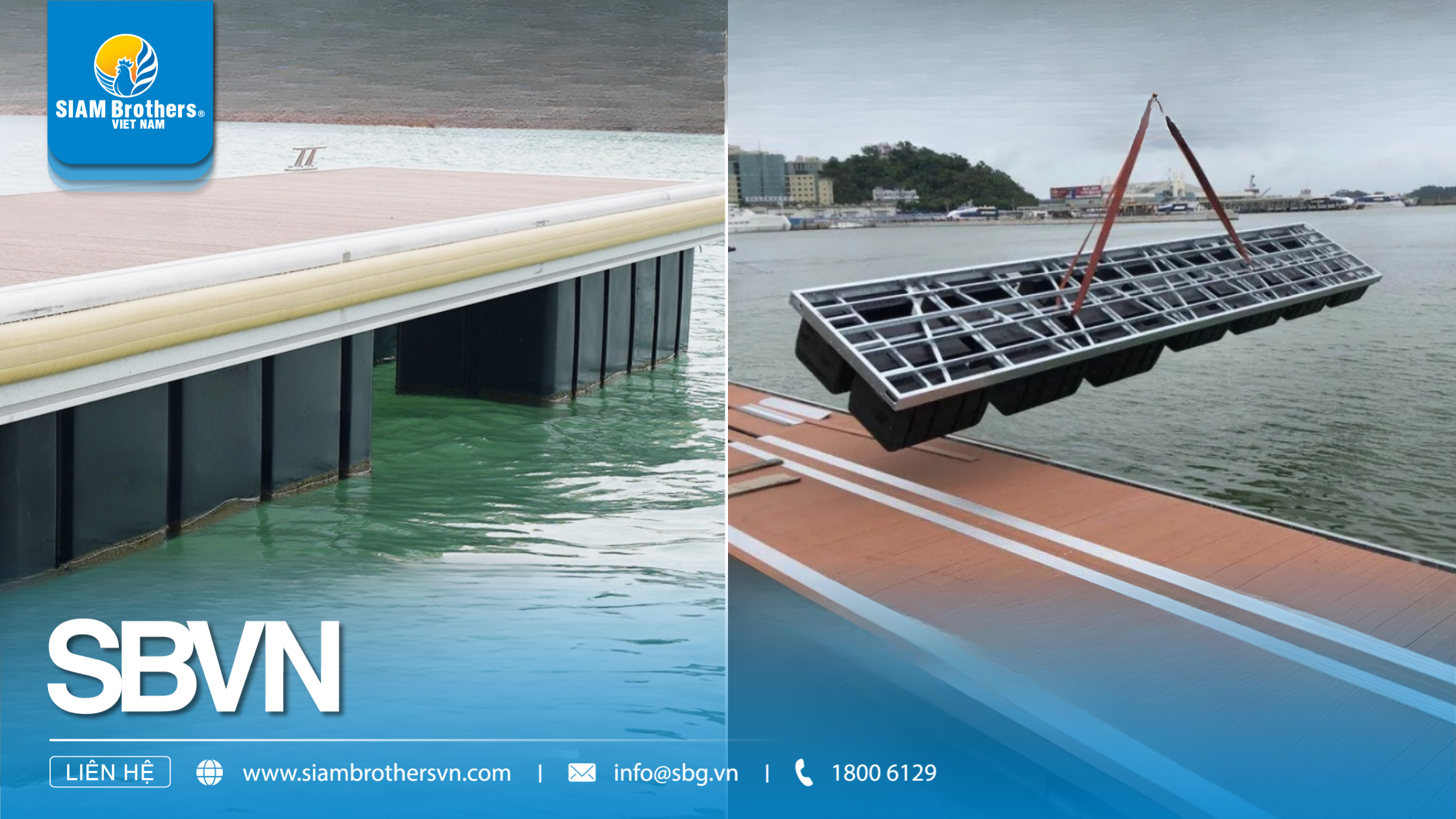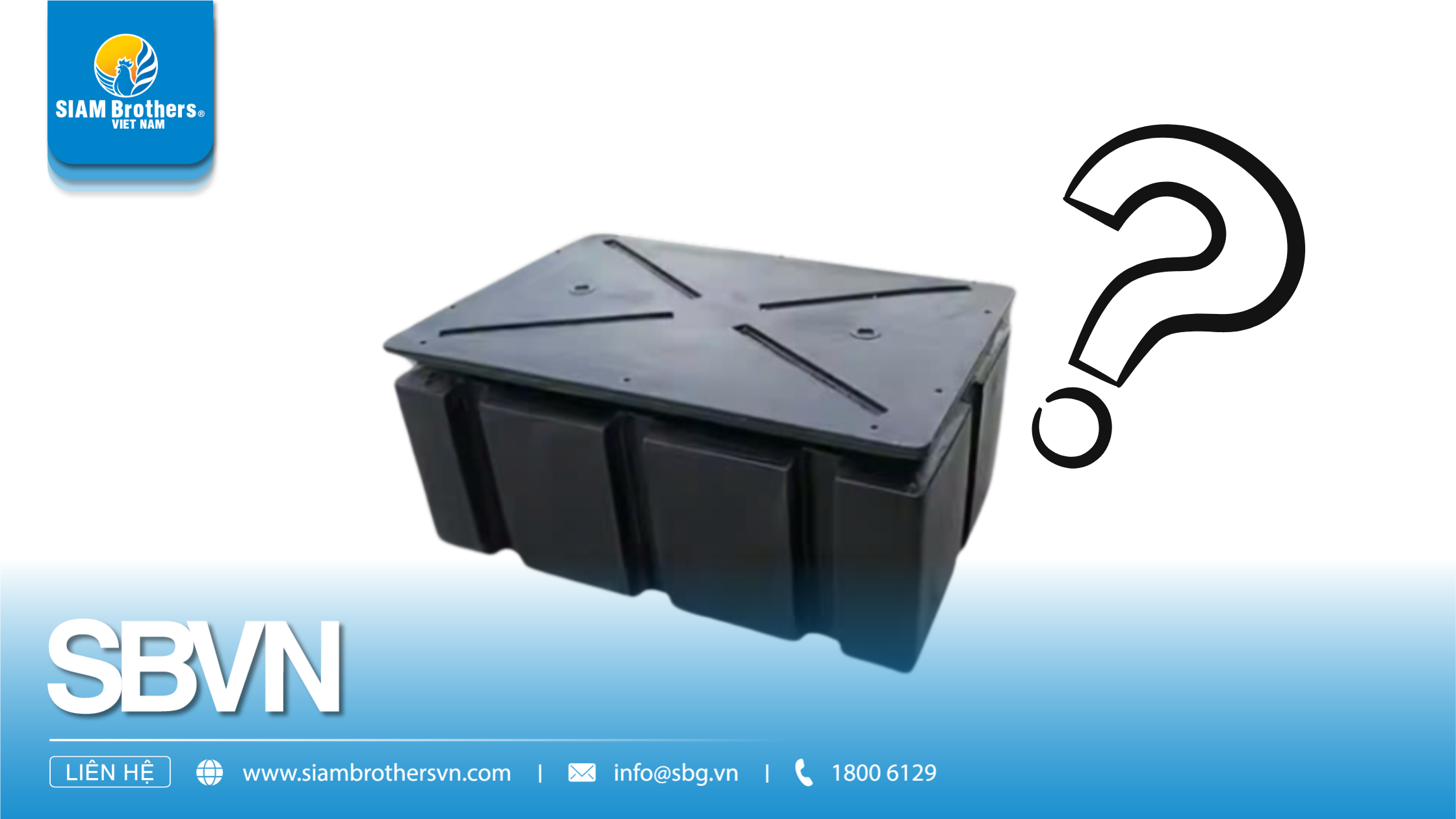Have you ever wondered why areas like swimming zones, mooring stations, or restricted zones in the open sea are clearly marked and easy to identify? The answer lies in the use of marine buoys – essential floating devices designed to ensure safety and guide water traffic. A marine buoy not only helps indicate boat docking points and mark safe swimming areas but also acts as a "soft barrier" between humans and underwater risks. As safety regulations grow increasingly strict, choosing the right type of internationally certified marine buoy is becoming a top priority for companies in marine transportation, coastal tourism, and aquaculture. Join SIAM Brothers Vietnam in exploring everything you need to know about marine buoys — from definitions and real-world applications to technical specifications — in this latest 2025 update.
1. What is a Marine Buoy?
A marine buoy is a floating device used to mark waterways, signal danger zones, or pinpoint the location of offshore structures. At SIAM Brothers Vietnam, our marine buoys are manufactured using high-quality HDPE combined with PES and foam-filled interiors. With standard dimensions of 1200mm x 800mm x 550mm and buoyancy of up to 450kg/m², these buoys are ideal for floating structures like docks, riverfront restaurants, or aquaculture cages.
Our marine buoys are UV-resistant, waterproof, and built to endure harsh weather conditions — ensuring long-term performance and cost-efficiency.
Outstanding Features of SIAM Brothers Marine Buoys:
- High Buoyancy: Foam-filled interior supports up to 450kg/m².
- Extreme Durability: Withstands waves and heavy loads.
- Weather Resistance: UV protection and waterproof for long-term outdoor use.
- Cost-Effective Installation: Easy setup with long-lasting results.
- Chemical Resistance: Compatible with various chemicals without corrosion.
Technical Specifications:
- Material: HDPE + PES (foam-filled)
- Color: Standard black (custom colors available upon request)
- Size: 1200mm x 800mm x 550mm
- Buoyancy: 450kg/m²
- Frame Installation: Customized design per project

2. Applications of Marine Buoys by SIAM Brothers Vietnam
SIAM Brothers Vietnam’s marine buoys are more than just floating markers — they play a crucial role in enhancing water safety, navigation, and area management across coasts, tourism zones, and harbors.
2.1 Ensuring Safety in Swimming Areas
- Define boundaries between safe swimming zones and deep or vessel-active waters.
- Alert swimmers not to go beyond safety limits.
2.2 Marking Mooring Points for Vessels
- Clearly indicate mooring positions for boats and ships.
- Facilitate organized docking and traffic flow in harbors and ports.
2.3 Assisting with Water Traffic Navigation
- Guide marine traffic through complex or busy areas.
- Create safe corridors for vessels to maneuver.
2.4 Demarcating Restricted or Protected Zones
Enclose areas for aquaculture, scientific research, or restricted access.
2.5 Ideal for Tourist Zones, Water Parks, and Seaside Resorts
- Enhance safety while maintaining visual appeal with highly visible, attractive designs.
With international quality standards, exceptional durability, and UV resistance, SIAM Brothers’ marine buoys are the top choice for businesses operating in maritime transport, coastal tourism, and waterfront infrastructure.
 Marine buoys are more than just floating markers — they’re comprehensive solutions for safeguarding lives, assets, and optimizing marine operations - Source: SIAM Brothers Vietnam
Marine buoys are more than just floating markers — they’re comprehensive solutions for safeguarding lives, assets, and optimizing marine operations - Source: SIAM Brothers Vietnam
3. Technical Standards and International Regulations for Marine Buoys
3.1. IALA Maritime Buoyage System
- The IALA Maritime Buoyage System, established by the International Association of Marine Aids to Navigation and Lighthouse Authorities (IALA), is currently applied in most coastal countries worldwide.
- This system is divided into two regions with distinct rules for buoy colors and vessel navigation directions:
- Region A: Covers Asia, Europe, and Africa.
- Region B: Covers North America, South America, and parts of the Pacific.
- Marine buoys must be installed with correct color schemes, shapes, and lighting signals according to each region’s regulations.
3.2. Compliance with Vietnam’s National Technical Regulations (QCVN)
In Vietnam, the production, installation, and use of marine buoys must follow the regulations set by the Ministry of Transport, especially:
- QCVN 39:2019/BGTVT – National technical regulations on maritime signaling.
- Specifies detailed requirements on dimensions, colors, signal light intensity, wave resistance, and construction materials.
- Installation units must be qualified, licensed, and subject to periodic quality inspections.
3.3. Material and Durability Standards
- Marine buoys must be made of materials that can resist corrosion, UV radiation, and saltwater environments. The most widely used material is virgin HDPE combined with a high-buoyancy foam core — offering lightweight construction, durability, and strong impact resistance.
- Marine buoys with integrated lights must meet IP standards for waterproofing, dust resistance, and mechanical strength.
3.4. Load-Bearing Capacity and Mooring System
- To ensure stability against waves and strong currents, marine buoys must:
- Be designed with buoyancy suitable for the structure (e.g., ≥ 450kg/m² like SIAM Brothers’ buoys).
- Include a secure mooring system using galvanized steel cables, heavy-duty chains, or concrete anchors fixed to the seabed.
- Be impact-resistant and remain structurally sound without deformation or leakage after extended use.
Why Follow International Standards When Using Marine Buoys?
- Complying with international standards ensures consistent signaling across global waters, reducing the risk of confusion and maritime accidents.
- For businesses, using marine buoys that meet IALA and QCVN standards enhances credibility and facilitates approval in inspection, handover, and offshore project implementation processes.
 Marine Buoys Must Comply With Strict Technical Standards and International Regulations - Source: SIAM Brothers Vietnam
Marine Buoys Must Comply With Strict Technical Standards and International Regulations - Source: SIAM Brothers Vietnam
4. Marine Buoys by SIAM Brothers Vietnam – Certified to International Standards
4.1. Certified to IALA & QCVN Standards
- SIAM Brothers’ marine buoys are designed and colored in full compliance with the IALA Region A maritime signaling system.
- They also meet the stringent requirements of Vietnam’s QCVN 39:2019/BGTVT standards.
4.2. Premium Materials – Superior Durability
- Constructed with virgin HDPE, our marine buoys are UV-resistant, corrosion-proof, and highly impact-resistant.
- The ultra-buoyant foam core ensures stability in rough waves and fast-flowing waters.
4.3. Reliable Mooring System
- Equipped with high-tensile galvanized steel mooring lines, rust-resistant and easy to install or maintain.
- Designed to stay anchored and maintain orientation without drifting or rotating during operation.
4.4. Easy Maintenance & Eco-Friendly
- Modular structure allows for quick part replacement and easy disassembly.
- Made with recyclable materials that are safe for marine ecosystems and aquatic life.
4.5. Widely Used in Vietnam and International Markets
- SIAM Brothers' marine buoys are trusted and deployed in a wide range of applications:
- Major seaports, harbors, and maritime navigation routes.
- Fishing vessel anchorage zones, marine conservation areas, and fishery marking zones.
- Floating structures for ecotourism, aquaculture cages, floating restaurants, and more.
 SIAM Brothers Vietnam is a pioneering manufacturer of high-quality marine buoys, trusted by domestic and international partners alike - Source: SIAM Brothers Vietnam
SIAM Brothers Vietnam is a pioneering manufacturer of high-quality marine buoys, trusted by domestic and international partners alike - Source: SIAM Brothers Vietnam
5. FAQ – Frequently Asked Questions About Marine Buoys
5.1 Can marine buoys be used in freshwater environments?
- Yes. Marine buoys are engineered to perform effectively in saltwater, brackish water, and freshwater environments.
- They are made from HDPE (High-Density Polyethylene), which is highly resistant to corrosion, UV radiation, and harsh weather conditions.
5.2 What is the average lifespan of a marine buoy?
- Typically, marine buoys last between 5 to 10 years, depending on environmental conditions and maintenance frequency.
- SIAM Brothers Vietnam’s marine buoys have a longer service life, thanks to advanced rotational molding technology and a high-quality foam core that enhances durability and buoyancy.
5.3 Do marine buoys require maintenance?
Yes. Regular maintenance is essential to ensure optimal performance, including:
- Ensuring the signal lights function properly.
- Checking the mooring system to keep the buoy in position.
- Keeping the surface clean for better visibility, especially at night.
5.4 Does SIAM Brothers offer nationwide delivery of marine buoys?
Absolutely. SIAM Brothers provides nationwide shipping, especially to coastal provinces, aquaculture areas, fishing port clusters, and tourist harbors.
5.5 How can I get advice on choosing the right marine buoy?
You can contact SIAM Brothers via hotline, Zalo, or email to:
- Get free consultation based on your application and local marine conditions.
- Receive a detailed quotation for each marine buoy type, optional accessories, and customized installation solutions.

With rapidly advancing technology and increasingly stringent international standards, selecting the right marine buoy—one that is durable, certified, and suited to local waters—is essential for any marine operator, aquaculture farm, or offshore transport project.
Looking for a high-performance, internationally certified marine buoy solution with reliable technical support? Let SIAM Brothers Vietnam be your trusted partner — from product consultation and selection, to full-service design, installation, and maintenance. Contact us today for the best solutions and competitive pricing tailored to your marine project!
Source: SIAM Brothers Vietnam
Contact us:
Address: 5th floor, VRG Building, 177 Hai Ba Trung Str., Vo Thi Sau Ward, Disc. 12, Ho Chi Minh City, Vietnam
Tel: (+84) 28 38 912 889
Hotline: 1800 6129
Facebook: www.facebook.com/siambrothersvn
Email: info@sbg.vn
Youtube: youtube.com/@siambrothersvietnam1728
X: x.com/sbvnjsc
OA Zalo: zalo.me/1402339229697925373
App SBVN ID:


 Marine buoys are more than just floating markers — they’re comprehensive solutions for safeguarding lives, assets, and optimizing marine operations - Source: SIAM Brothers Vietnam
Marine buoys are more than just floating markers — they’re comprehensive solutions for safeguarding lives, assets, and optimizing marine operations - Source: SIAM Brothers Vietnam Marine Buoys Must Comply With Strict Technical Standards and International Regulations - Source: SIAM Brothers Vietnam
Marine Buoys Must Comply With Strict Technical Standards and International Regulations - Source: SIAM Brothers Vietnam SIAM Brothers Vietnam is a pioneering manufacturer of high-quality marine buoys, trusted by domestic and international partners alike - Source: SIAM Brothers Vietnam
SIAM Brothers Vietnam is a pioneering manufacturer of high-quality marine buoys, trusted by domestic and international partners alike - Source: SIAM Brothers Vietnam
